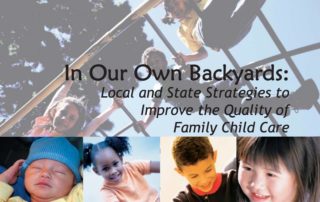Poverty and Opportunity
The equal participation of women in politics and government is integral to building strong communities and a vibrant democracy in which women and men can thrive. By voting, running for office, and engaging in civil society as leaders and activists, women shape laws, policies, and decision-making in ways that reflect their interests and needs, as well as those of their families and communities.
Today, women constitute a powerful force in the electorate and inform policymaking at all levels of government. Yet, women continue to be underrepresented in governments across the nation and face barriers that often make it difficult for them to exercise political power and assume leadership positions in the public sphere. This chapter presents data on several aspects of women’s involvement in the political process in the United States: voter registration and turnout, female state and federal elected and appointed representation, and state-based institutional resources for women. It examines how women fare on these indicators of women’s status, the progress women have made and where it has stalled, and how racial and ethnic disparities compound gender disparities in specific forms of political participation.

Details
Map Description, legend or descriptive text
Section Links
Political Participation Rank and Score by State
Resilient and Reaching for More: Challenges and Benefits of Higher Education for Welfare Participants and Their Children
This report details the inspiration, struggles, and perseverance of those pursuing a college degree while receiving welfare in California and the benefits that education brings them and their children.
Report to the Maryland Equal Pay Commission
The Institute for Women’s Policy Research constructed a dataset from the 2002 through 2004 American Community Survey Public Use Microdata Files (ACS) for people residing in the state of Maryland.
In Our Own Backyards: Local and State Strategies to Improve the Quality of Family Child Care
Th is report examines state and local policies and programs designed to improve the quality of family child care. For the purposes of this report, family child care is defined as a provider caring for two or more unrelated children in the provider’s home.
Status of Women in the States: 2004
Women in the United States have achieved significant advances and are seeing important changes in their lives. Their access to political, economic, and social rights has improved greatly over the past 40 years. Nonetheless, they do not enjoy equality with men, and they lack [...]
The Price of School Readiness: A Tool for Estimating the Cost of Universal Preschool in the States
DOWNLOAD REPORT Families and communities throughout the United States are embracing early childhood education as an important and beneficial experience for children. Policymakers are beginning to view children’s access to early education as a public good, and are debating ideas such as universal [...]
Still a Man’s Labor Market: The Long-Term Earnings Gap
Although the wage gap, measured by conventional methods, has narrowed in the last several decades, with women who work full-time full-year now earning 77 percent of what men earn (compared with 59 cents on the male dollar 40 years ago), its sweeping effects are largely unacknowledged because its measurement is limited to a single year and restricted to only a portion of the workforce. When accumulated over many years for all men and women workers, the losses to women and their families due to the wage gap are large and can be devastating.






